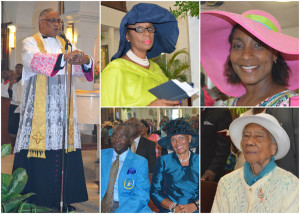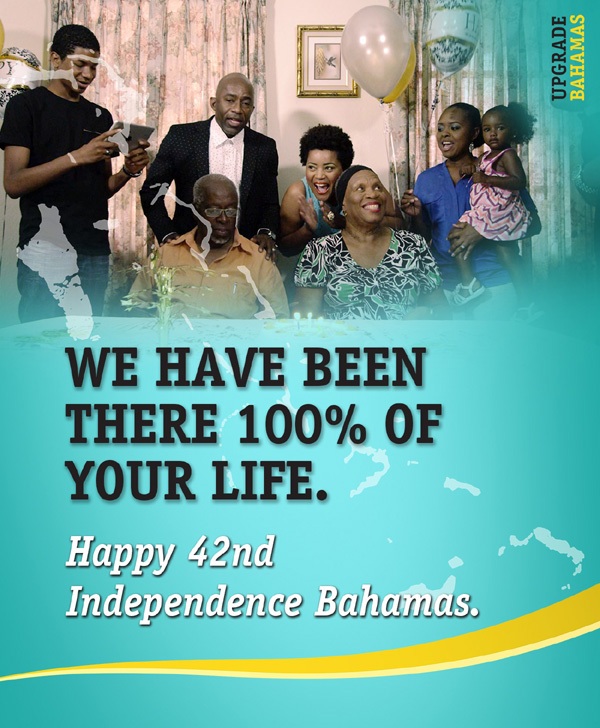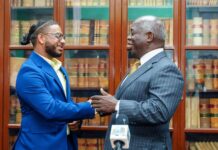
Nassau, The Bahamas – As the earliest Anglican Church in Bain and Grants Town, St. Agnes Church has served as an integral part of these communities, fulfilling its role to minister to residents there and providing the impetus for their early growth and progress.
In celebration of the 170th anniversary of the dedication of St. Agnes Anglican Church, during July 2015, Dr. Grace Turner, research consultant with the Antiquities, Monuments and Museums Corporation recently gave an historic presentation on The Impact of St. Agnes Anglican Church: An Integral Part of Bain and Grants Town.
Dr. Turner recollected that about four years following the abolition of the slave trade in 1807, African captives who were found on ships crossing the Atlantic intending to be sold as slaves, began arriving in The Bahamas. Between 1811 and 1860 more than 6,000 of those slaves re-settled in The Bahamas with many of them re-settling in the community of Bain and Grants Town.
“When St. Agnes was established in the 1840s it was established for the southern suburbs of New Providence from Over-the-Hill straight to the southern coast. From the 1700s the community centered pretty much north of what we know as Wulff Road, north of Grants and Bain Town.
“When the Church was established in the 1840s it was understood that the congregation would consist primarily of people of African descent and liberated Africans. By 1840s most of this community were liberated Africans.”
Schools
Fr. John Woodcock, who became the second rector of St. Agnes in 1849, had a keen interest in the advancement of the people of the neighboring community of St. Agnes. “He was very concerned that there was just one public school in this very large, extremely diverse community. At that school was the original St. Agnes Church building at the corner of Market and Cockburn Street, now St. Agnes Day School. It was the only public school for all of the communities.
Fr. Woodcock established a fund to open a second pre-school as students attending the original public school were required to pay a small fee.
“For the very poorest in the community, especially if there were several school-aged children, even the small fee was too much,” said Dr. Turner. “Parents had to decide which child could go to school. Fr. Woodcock established a free school in Bain Town, the area between Hospital Lane and Market Street. Bain Town is the later of the two communities, which started developing in the 1840s when St. Agnes was being established. Bain town was being developed the same time as St. Agnes that is the reason why Fr. Woodcock established this free school to serve that particular side of the community.
“By the 1920s the Board of Education stepped in and took over the school. Fr. Woodcock’s endowment funds to pay the teacher for that school were getting low and the Board of Education bought the property and compensated St. Agnes church for it. Located on Hospital Lane, it is the oldest public school in The Bahamas. The school is a direct result of the community activism of the rector of St. Agnes.”
Cemeteries
According to Dr. Turner, St. Agnes Church did not get its own cemetery until the late 1800s. For about 40 to 50 years the church used community cemeteries such as Bethlehem Cemetery and Potter’s Field Cemetery. When Bishop Christopher Lipscomb came to consecrate the cemeteries in 1824, Bethlehem Cemetery was specifically for blacks and people of black color. Potter’s Field, the cemetery on the western side of Nassau was for whites.
In 1833, Governor Cockburn authorized all clergy to no longer segregate people in death allowing anyone to be buried in Potter’s Field Cemetery.
Impact on Other Churches
In the 1900s St. Agnes was well-established in the community and had a significant impact on other churches.
Dr. Turner recalled that Rev. Charles Thompson, who established Transfiguration Baptist Church, located on the corner of Market and Vesey streets in 1927, was originally a member of St. Agnes and desired to become a priest. “It would have been rather challenging for someone from the Bain and Grants Town community to be able to become a priest at that time,” said Dr. Turner.
He became frustrated with his ambitions, moved away from St. Agnes Church and established his own church. Transfiguration Baptist is one of the early churches that developed out of St. Agnes Church.
Other churches in the community have similar stories, not all originated with St. Agnes Church. During the dedication period of St. Agnes Church other churches existed in the community including the Baptist and the Methodist, but St. Agnes Church was the first Anglican Church.
“St. Agnes Church, becoming the first Anglican Church, is extremely significant because the Anglican Church was the established church of all of Great Britain at the time so it was significant to have an Anglican Church in these communities regardless of how many other denominations were represented. St. Agnes was established to minister to the lowest in the society, to reach out to them, but now over 100 years later, St. Agnes Church is unofficially the “black Cathedral” of New Providence. That is a major achievement and it did not come about simply because we wished it so. It was because of the very significant role that St. Agnes Church played and continues to play in this very vibrant and diverse community that became and remains Over-the-Hill.”
Rectors
Until the 1930s the rectors at St. Agnes Church were all of English decent. The first Bahamian rector was Fr. Pyfrom, a white Bahamian, who became rector in the late 1930s. The first black Bahamian rector and the first to head an Anglican Church at St. Agnes in New Providence was Fr. Milton Cooper. He became rector in the 1940s.
In preparation for independence, The Bahamas received its first Bahamian bishop in 1972. “Since then all of the bishops of the Diocese of Nassau and the Turks and Caicos Islands have come out of St. Agnes. That also speaks to the vibrancy, the dynamism, the very engrossed role that St. Agnes Church has played and continues to play in the surrounding community that has so many significant milestones within the history not simply as a church within itself, but within the entire Anglican Diocese in The Bahamas and the Turks and Caicos Islands. That is significant, that is something that the members of St. Agnes are rightfully proud of because it speaks to the continuing role that St. Agnes plays as an institution within the community,” said Dr. Turner.
The celebration programme of the 170th Anniversary of St. Agnes during July 2015 includes the historical presentation on the church; a Mass in honour of the life and contributions of the late Venerable Archdeacon William Thompson of Grants Town, followed by Youth Jamboree and Mini Fair; Celebration of the Octave of Dedication; and a Boat Cruise. Other community churches have joined with St. Agnes in festivities to commemorate their linkages — Bethel Baptist Church, St John’s Native Baptist Church, Wesley Methodist Church, and Transfiguration Baptist Church. (Photos: Courtesy Athama Bowe)








